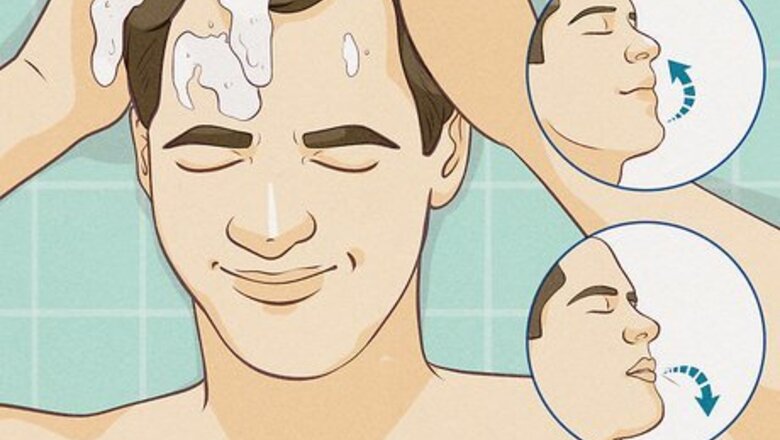
views
Getting Shampoo Out of Your Eyes With Water
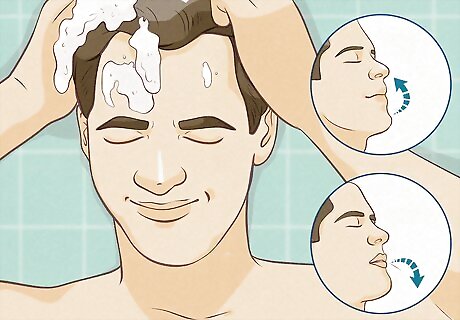
Calm down. When shampoo is in your eyes, you might experience a burning or stinging sensation. Pain can often lead us to panic. Staying calm will ensure you do not do anything which might make the situation worse. There are few options for calming down when you’re confined to your shower, but one way to calm down in such a situation is to take control of your breathing. Become conscious of the pattern of inhaling and exhaling. Try to slow your breathing by inhaling deeply and slowly for a count of five, then exhaling for another five seconds. Do this at least three times. You might also envision yourself in a peaceful scene where nothing hurts and you are not in danger. For instance, try imagining yourself on a peaceful mountaintop. Try to imagine the breeze on your face and the gentle warmth of the sun on your skin.
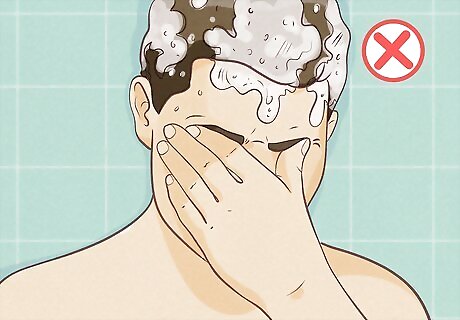
Don't rub your eye(s). The stinging pain you experience when shampoo gets in your eyes is caused by sodium lauryl sulfate (SLS). SLS is a foaming agent, so by rubbing the shampoo into your eyes, you'll only end up exacerbating the foaming process at work within your eye. Rubbing will work the shampoo deeper into your eyes -- quite the opposite of a desirable outcome when your aim is to remove it.
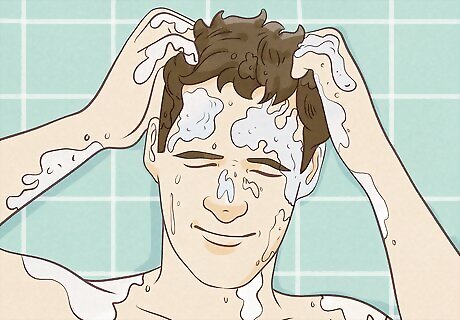
Close your eyes. Bring your top and bottom eyelids together to close them. By closing your eyes, you end the exposure to shampoo and ensure the problem does not increase in magnitude. Do not open your eyes until you are ready to rinse the shampoo away. With your eyes closed, rinse the rest of the shampoo off. By removing the rest of the shampoo from your head, you’ll avoid getting more shampoo in your eyes.
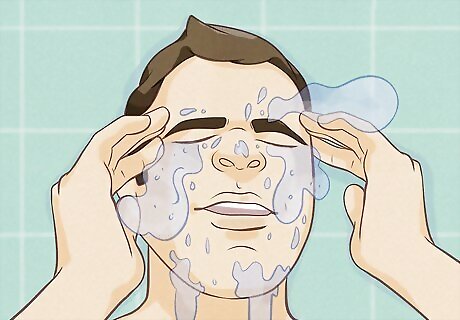
Flush your eyes with cool water. Assuming you’re in the shower, adjust the temperature so that the temperature is cool. Open your eyes and turn your face up towards the shower head so that your eyes receive the most direct application of water. Turn your head from side to side so that the water flows across both eyes. Keep your eyes as open as possible as the water flows into them. Run the water for 2-3 minutes. The shower should be gentle. If it is not, run the faucet on the tub and cup cool water with both your hands. Splash the water in your eye repeatedly for several minutes.
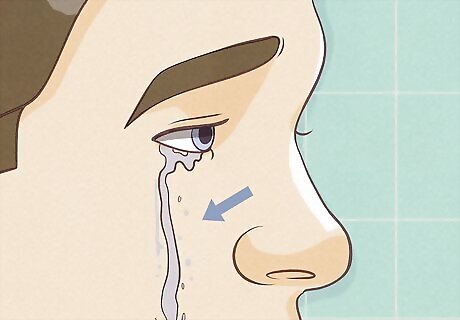
Try to cry. After rinsing the eye with water directly from the shower, most of the shampoo should be out. Just in case it isn’t though, you should try to cry in order to remove any remaining contaminant. Your eyes might be watering already as a natural reaction to getting shampoo in the eyes. If they are not, bringing yourself to tears will remove toxins and clear your eyes of any remaining shampoo in a natural way. Crying on command takes long practice, but thinking of tragic thoughts -- like being a child alone and scared in the woods -- is a good way to inspire tears.
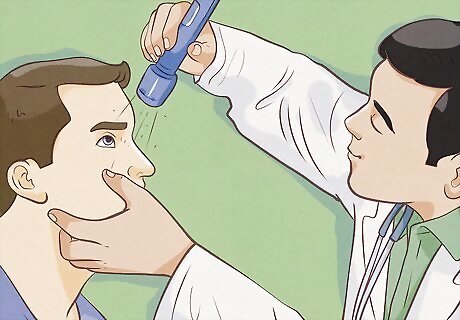
See a doctor right away if your eye continues to burn or sting, or if you experience blurred vision after clearing your eye out with water. With the application of some cool water to flush the irritant out, your eye will almost certainly be back to normal after a few minutes. However, if you experience eye pain or blurriness in your vision which is acute, recurrent, or inspires worry, contact a medical professional immediately. It's possible you have an allergic reaction to a specific ingredient in the shampoo you used. More serious symptoms such as blood or pus coming out of or congealing on the eye after an encounter with shampoo should also be cause for concern, and be checked by a doctor without delay.
Avoiding Shampoo in Your Eyes
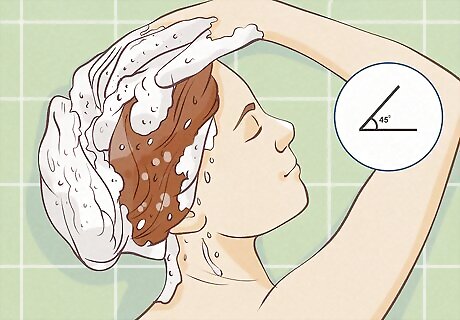
Lean your head back when shampooing. As you lather your shampoo into your hair, tilt your head back. Look up towards the ceiling at a forty-five degree angle. This ensures that any suds and shampoo bubbles fall behind you, not down into your face. Do not tilt your head forward or keep your head on an even level as you would when looking forward normally. Continue to hold your head back when you rinse the shampoo out.
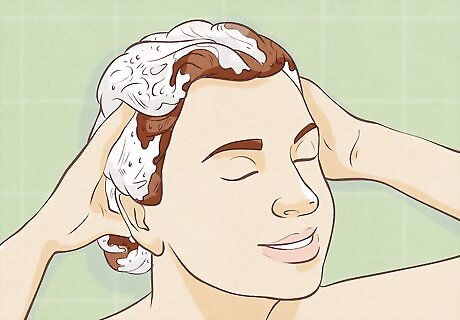
Keep your eyes closed when shampooing. Try to shampoo quickly and efficiently with your eyes closed. Doing so is not as difficult as you might think. If you are familiar with the space of your own bathtub or shower, you’ll know where to step and where not to. Squeeze a small amount of shampoo into your hand, then close your eyes and apply it as needed. Keep your eyes closed when you step beneath the shower head to rinse, and only open your eyes after you’ve rinsed completely.
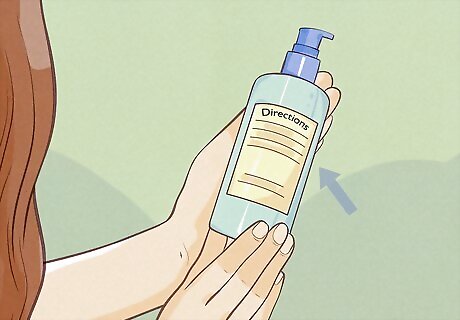
Always read the care label before using. Directions for use are printed on the back of your shampoo bottle. They will provide instructions as to how to best apply the shampoo. Some shampoos have specific directions as to how you can avoid getting shampoo in your eyes. Heed these guidelines when utilizing your shampoo.
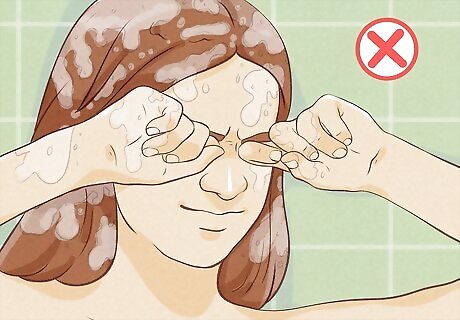
Don’t rub your hands or fingers in your eyes immediately after shampooing. When you apply shampoo to your hair, you probably use one or both hands to do so. After applying the shampoo, your hands might have shampoo suds or residue on them. If you place your hands or fingers in your eyes while the residue or suds are still on them, you will get the shampoo in your eyes.
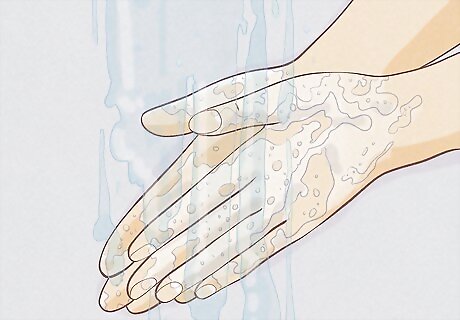
Wash your hands after shampooing your hair. If you want to place your fingers or hands on or around your eyes after shampooing, rinse your hands vigorously with water before doing so. You can use soap, but don’t have to. Ensure you rinse the shampoo (and soap, if using) from the palms and backs of your hands, as well as between your fingers. Only then can you safely touch or rub your eye.
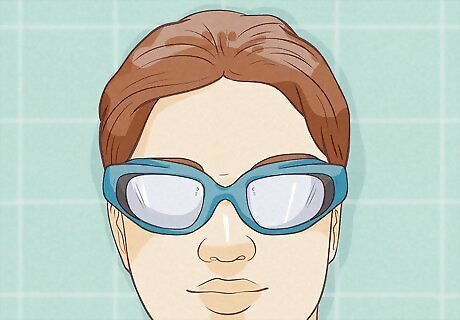
Wear protective eye-wear. Wear goggles in the shower if getting shampoo in your eyes causes a particularly acute irritation. You can purchase goggles intended for aquatic environments from your local sporting goods store. Wear them while shampooing, but remove them after you’ve finished rinsing the shampoo out so as to ensure your face gets washed properly.
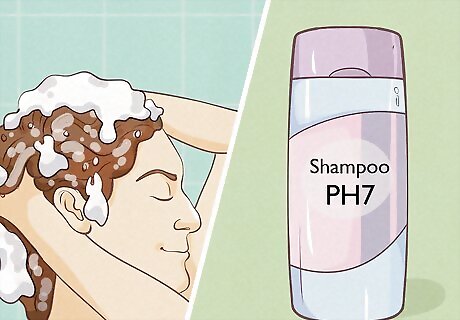
Try a tears-free shampoo. Several shampoo brands have a neutral acidity, meaning their pH value is 7. When using a neutral shampoo, chances are that you will not notice or feel discomfort when some gets in your eyes. As their name suggests, these shampoos are perfect for babies or young children who cannot yet wash their own hair properly and are sensitive to the slight acidity of normal shampoos. These tears-free shampoos will cause less pain than a normal shampoo will if you get any in your eyes.
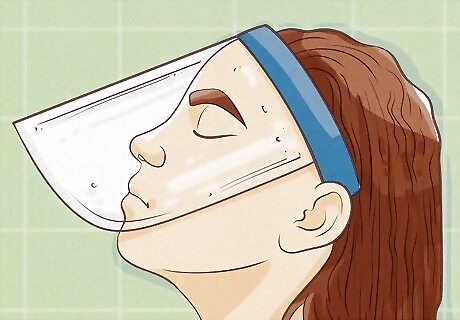
Use an eye shield. An eye shield is a cap with a small brimmed cap which resemble a golf visor. Place the eye shield on your head and ensure the brim is snugly against your forehead. By wearing the eye shield in the shower, suds from the shampoo will trail off the the sides of your temples or over the brim of the hat. Eye shields are especially useful for preventing shampoo from getting in the eyes of young children.
















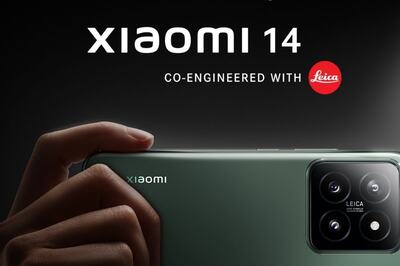
Comments
0 comment